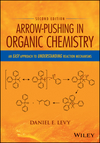- the lack of new funds available for investment, and
- the need to deliver a rapid return on investment capital.
There is perhaps no sector impacted more by these two issues than pharmaceuticals. The reasons are in fact quite plain. Products cannot be advanced from research through the clinic without appropriate funding. Furthermore, the drug discovery process is inherently slow requiring up to 15 years for successful programs to reach market. As I have discussed in various postings, these issues, while formidable, can be addressed through creative business models. In this vein, at the ACS meeting in Boston, I learned of Lilly's PD2 program. This effort, effectively recruits small companies and academic laboratories by offering free and confidential compound screening with the intention of mining this chemical space for potential products to develop and/or potential collaborative relationships.
The PD2 program is innovative in that it utilizes the broad capabilities and chemical space provided by a broad network of settings for the purpose of advancing its drug discovery pipeline. Within the parameters of this program,
- potential collaborators submit compound structures to a confidential on-line evaluation tool
- following evaluation of submitted structures, those deemed interesting to Lilly's programs are selected for screening
- following screening of interesting structures, those with promising activity profiles become subjects for collaborative development activities
If you are a small company or an academic group with limited screening capabilities, how can you lose? This is especially important regarding compounds that are not of interest to Lilly - companies/academics retain all IP rights. In the end, small companies/labs with limited resources identify potential development partners and Lilly gets to enhance its research/development pipelines. From the corporate perspective, this is truly a win-win scenario providing a new dimension to the paradigm shift impacting today's pharma/biotech sector.
Corporate Win-Win Scenarios - Where do Employees Fit In?
Looking at PD2 from inside of Lilly's corporate headquarters or from within the labs of a potential small company collaborator, compounds are changing hands and the no-cost synergistic resources available are enough to entice business personnel from both entities to enter into mutually beneficial contractual relationships. However, if viewed from above, one can see a slightly different scenario. On one side, small company scientists engaged in drug discovery activities find a sense of security through potential interest from big-pharma. On the other side, the potential influx of developable compounds might induce Lilly's drug discovery infrastructure to question its long-term importance to the company. After all, if Lilly can obtain drug discovery services for free, why should it employ its own efforts?
The above argument, while presenting a black-and-white picture, does illustrate a trend towards new paradigms in the pharmaceutical industry. Such paradigms clearly depend upon research activities. However, such research activities are executed through peripheral organizations and not within the infrastructure of parent companies. Nobody disputes the fact that without research, there can be no development pipelines. The only real questions are:
The above argument, while presenting a black-and-white picture, does illustrate a trend towards new paradigms in the pharmaceutical industry. Such paradigms clearly depend upon research activities. However, such research activities are executed through peripheral organizations and not within the infrastructure of parent companies. Nobody disputes the fact that without research, there can be no development pipelines. The only real questions are:
- Who does the research?
- Where will research activities be located?





I've seen a number of Ph.D. organic chemists "check out" of a lab. It always seemed a shame to see them wash a large number of hard-won compounds directly into the chemical waste while cleaning out their glassware. These compounds were not made during the course of drug discovery per se, but for a methodology project or total synthesis. The advantage of a program like Lilly's is that these explorations of chemical space would be investigated for potential therapeutic potential at low cost to the PI and not wasted. It truly would be win-win.
ReplyDeleteThis is a very good read. For someone who is studying pharmacy in school, I feel like this is very helpful to me. I also love how you tackled about the corporate aspect of pharmaceutical industry because it is showing the other side of the story.
ReplyDeleteGenerally speaking, the jacketed glass reactor material may be from the sand, which may make machine sent back to the vibrating screen so as to be separated. Here: www.toption-china.com/products/glass-reactor-with-jacket-10l. In fact, the stone crushing machine is very popular in Africa, Middle East, India, South Asia, Sudan etc.
ReplyDelete